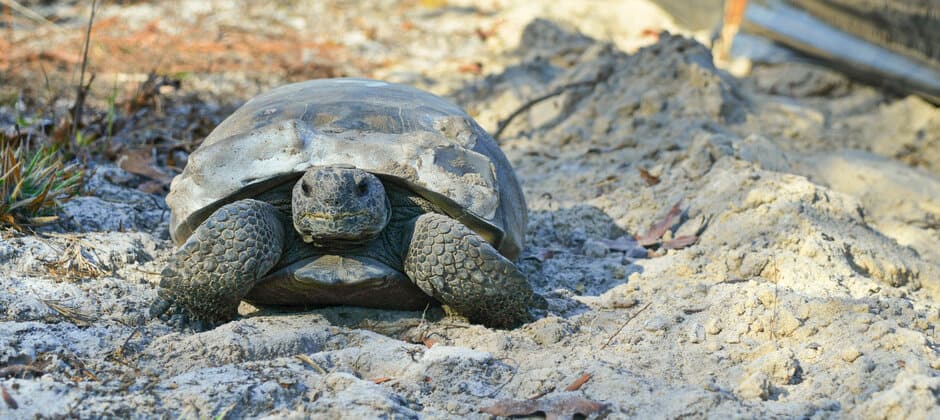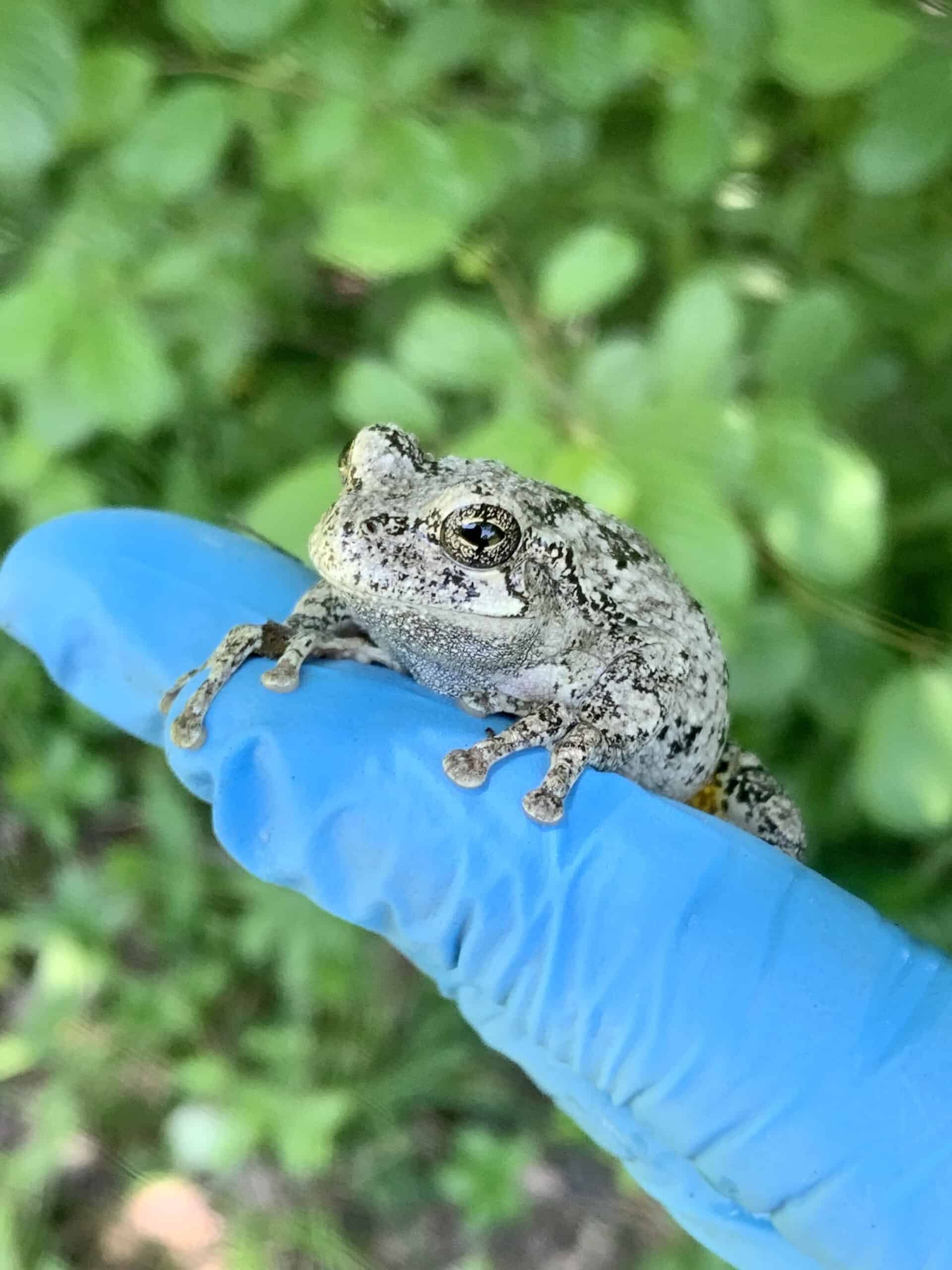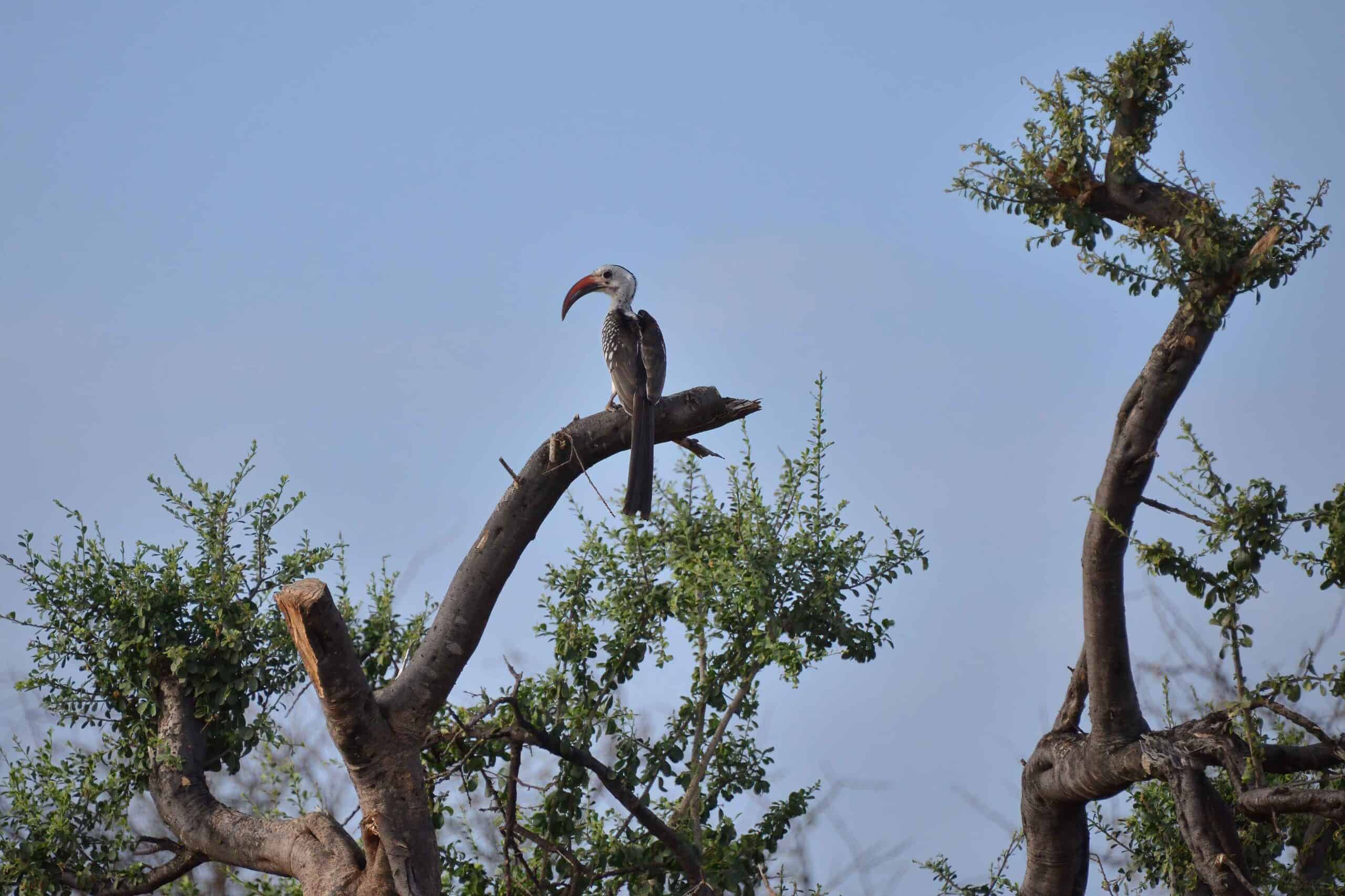Share this article
WSB: Cheap GPS loggers work for tortoise tracking
Inexpensive, store-bought GPS tracking devices work just as well as expensive professional gear for surveying tortoises that spend much of their time underground.
University of Georgia researchers were looking for ways to track translocated gopher tortoises (Gopherus polyphemus), which are listed as threatened under the Endangered Species Act in part of their range. The researchers surveyed for tortoises and other federally listed species like eastern indigo snakes (Drymarchon couperi) at an area slated for zirconium and titanium mining in southeast Georgia. After translocating the tortoises to a nearby Georgia Department of Natural Resources’ Wildlife Management Area, they wondered how the reptiles would adapt to their new environment. In a study published in The Wildlife Society Bulletin, researchers set out to find the answers.
But tracking devices can be expensive, costing hundreds or even thousands of dollars in some cases for gadgets that can easily get lost if they malfunction or the battery dies in the wild. Lance Paden, a master’s student at the time studying under lead author Kimberly Andrews, wanted to see whether relatively cheap devices available for around $50 might serve just as well for tortoise tracking.
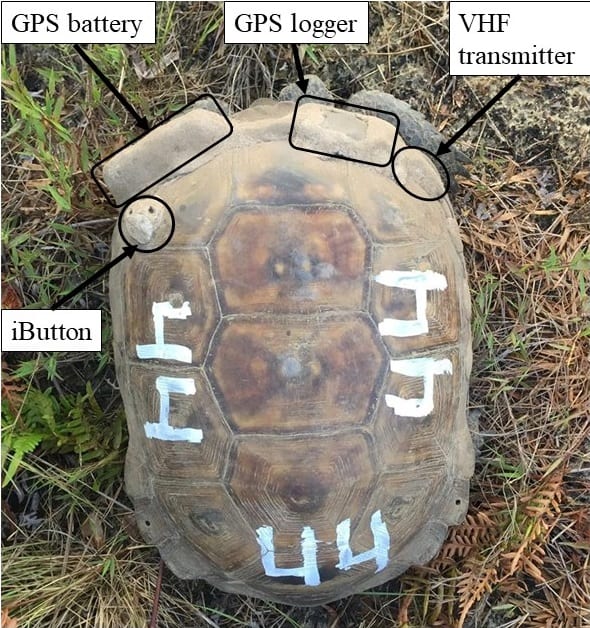
A figuring showing the GPS and VHF trackers on a tortoise. Credit: Lance Paden
They modified the small devices by removing the SD-card-sized electronics from the larger case. They attached the removed electronics to larger batteries and used epoxy putty to stick them onto the tortoise’s front shells. After two weeks of stationary testing, they also attached VHF radio transmitters along with the GPS loggers to 40 tortoises, half of them female and half male. Since these cheap devices lack a remote data download option, the radio transmitters allowed them to find and recapture the tortoises to download their recorded GPS data and redeploy them with a freshly charged GPS logger batteries.

A figuring showing how the researchers modified the GPS logger. Credit: Lance Paden
The devices collected over 146,000 data points overall during the 20-month study.
“It turned out to be comparable to a lot of much more expensive units,” Paden said.
The setup worked well, Paden said. Of 84 deployments of the technology, only two devices went missing. The quality of the data in terms of location accuracy was also comparable published data from much more expensive professional wildlife-specific GPS devices.
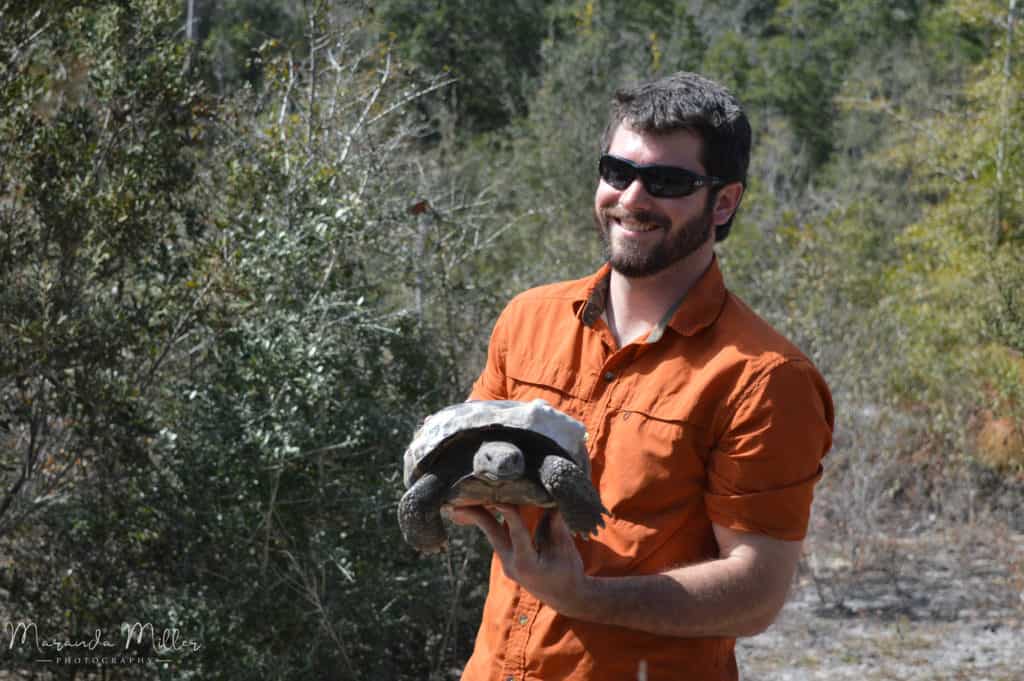
Researcher Lance Paden holds a tortoise equipped with a GPS logger Credit: Maranda Miller
The devices also worked surprisingly well despite the depth of the tortoises’ burrows. Paden said that due to the positive results of this study, researchers are already applying similar techniques to other species, including even some freshwater turtles.
This article features research that was published in a TWS peer-reviewed journal. Individual online access to all TWS journal articles is a benefit of membership. Join TWS now to read the latest in wildlife research.
Header Image: A translocated gopher tortoise with a GPS logger in a temporary holding pen Credit: Maranda Miller



